Abstract
Response-independent pairings of a tone and a brief shock were superimposed on uncued avoidance responding in four groups of rhesus monkeys. For one group, tone presentations were immediately followed by an unavoidable electric shock; for the remaining groups, gaps of 5, 20, and 80 sec intervened between tone termination and shock delivery. These temporal values subsume paradigms usually treated as discrete procedures; the conditioned emotional response procedure (0-sec gap between tone and shock), trace procedure (5-sec gap) and safety-signal training (80-sec gap). Within each group, tone durations of 10, 20, 40, and 80 sec were examined. A response pattern marked by maximum response rate in the initial 5 sec of the tone followed by deceleration before shock was observed when shock immediately followed the tone, but not when gaps were interposed between the tone and shock. Response rates in the first 5 sec of the tone were a function of both tone duration and duration of the gap. When the gap was 0 to 5 sec, initial response rates were highest in longer duration tones; this relationship between tone duration and initial tone response rate was not observed for longer gaps.
Full text
PDF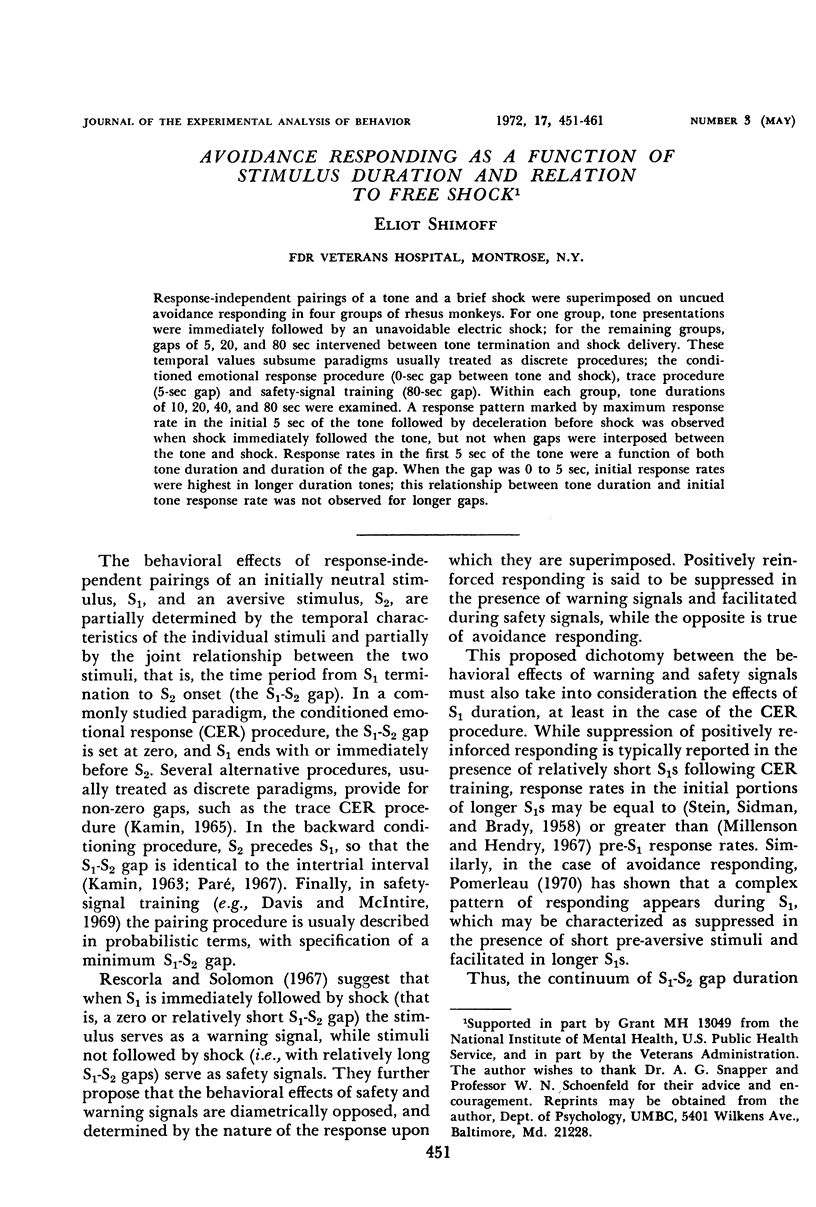
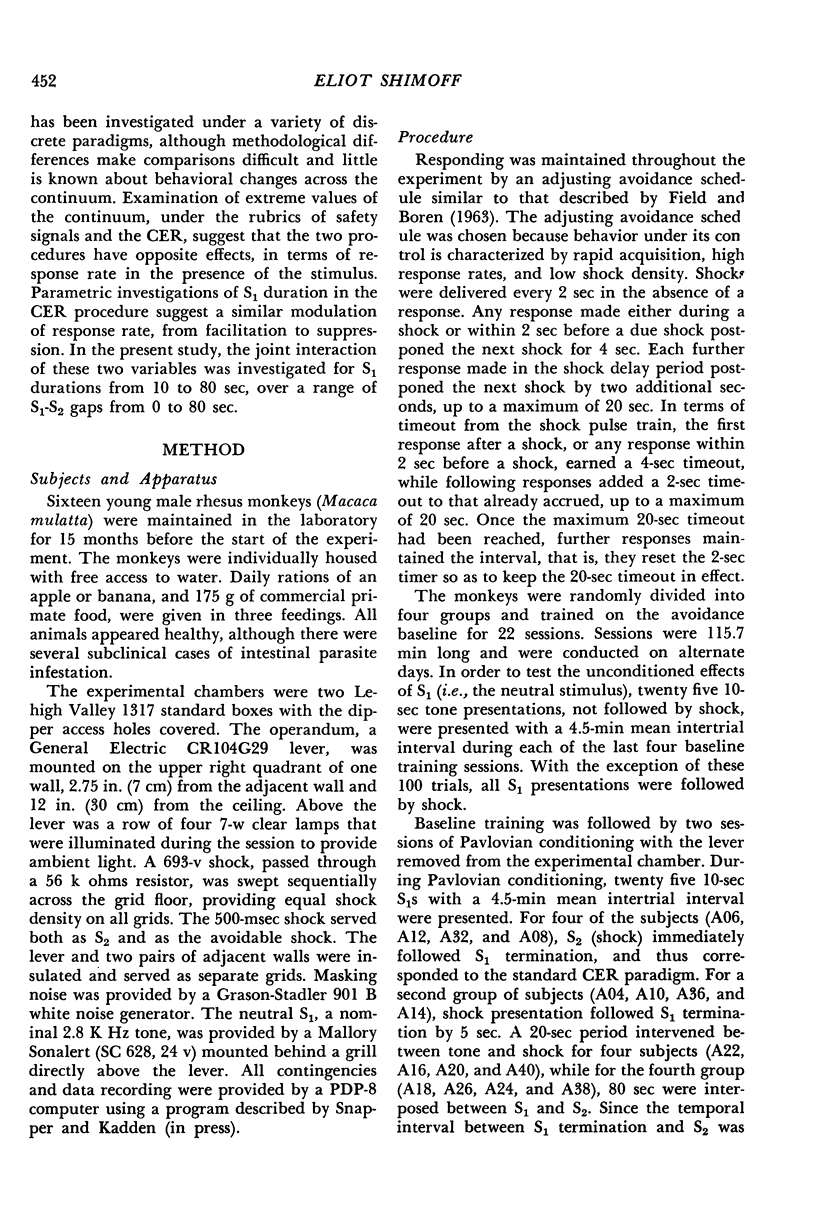
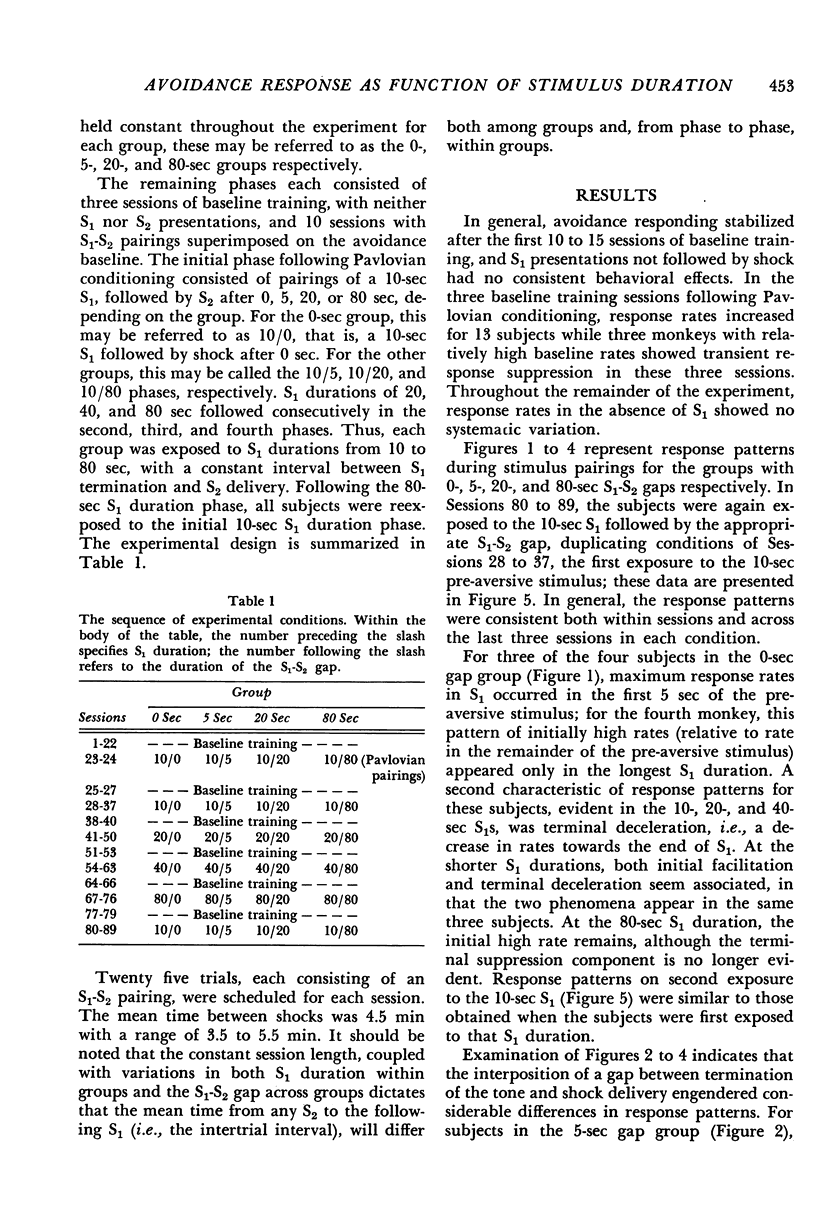
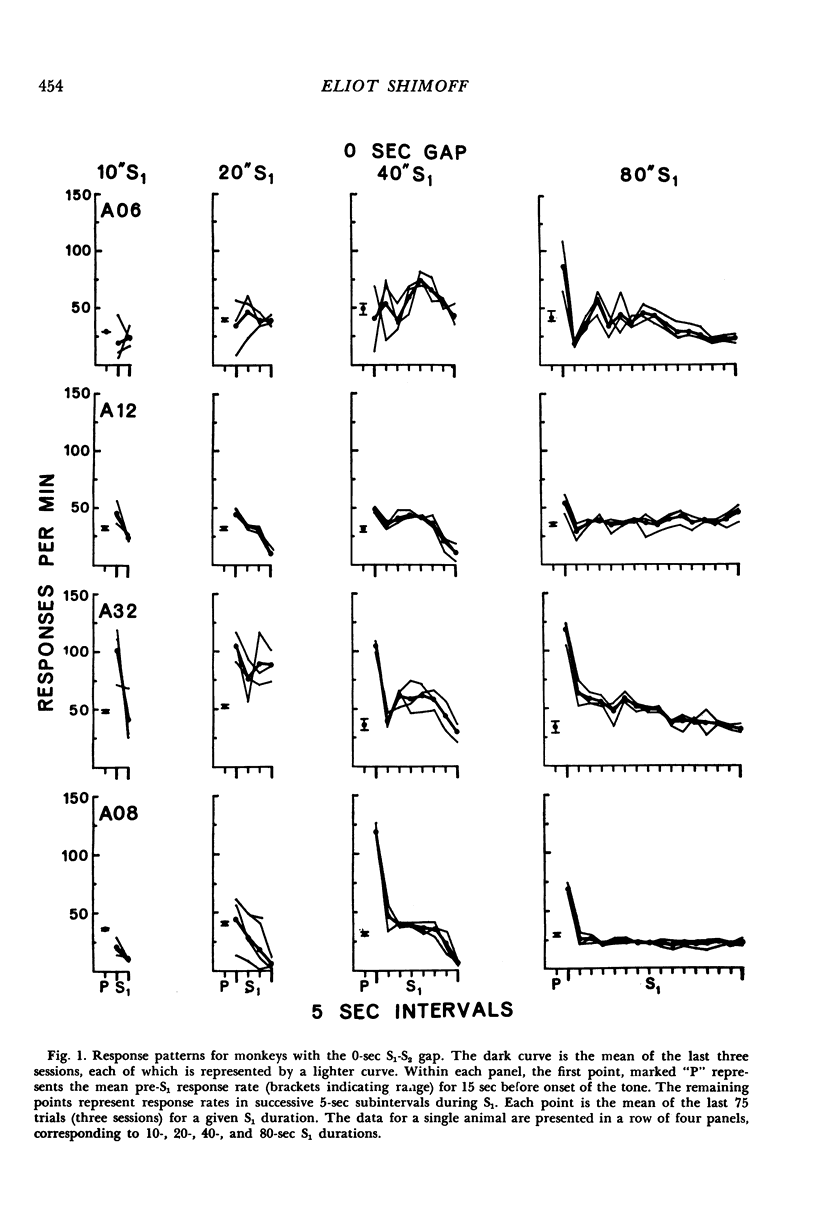
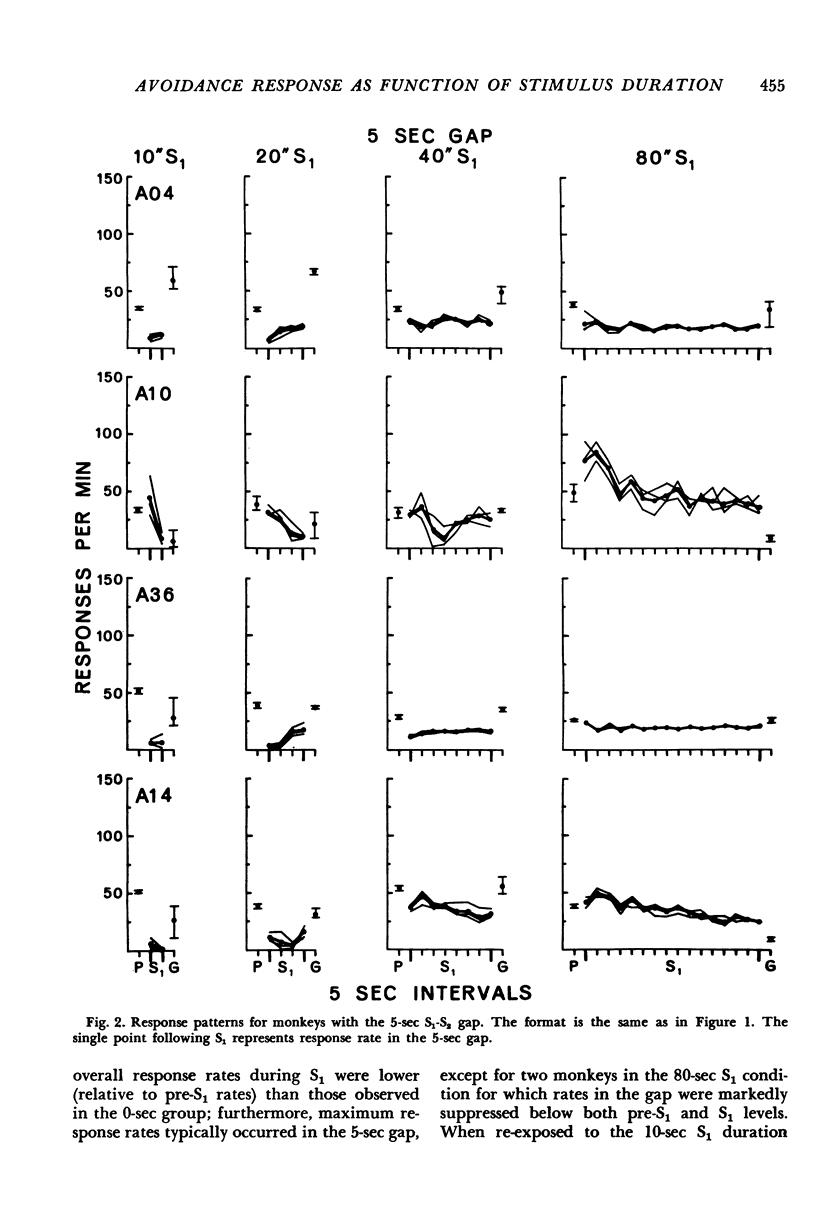
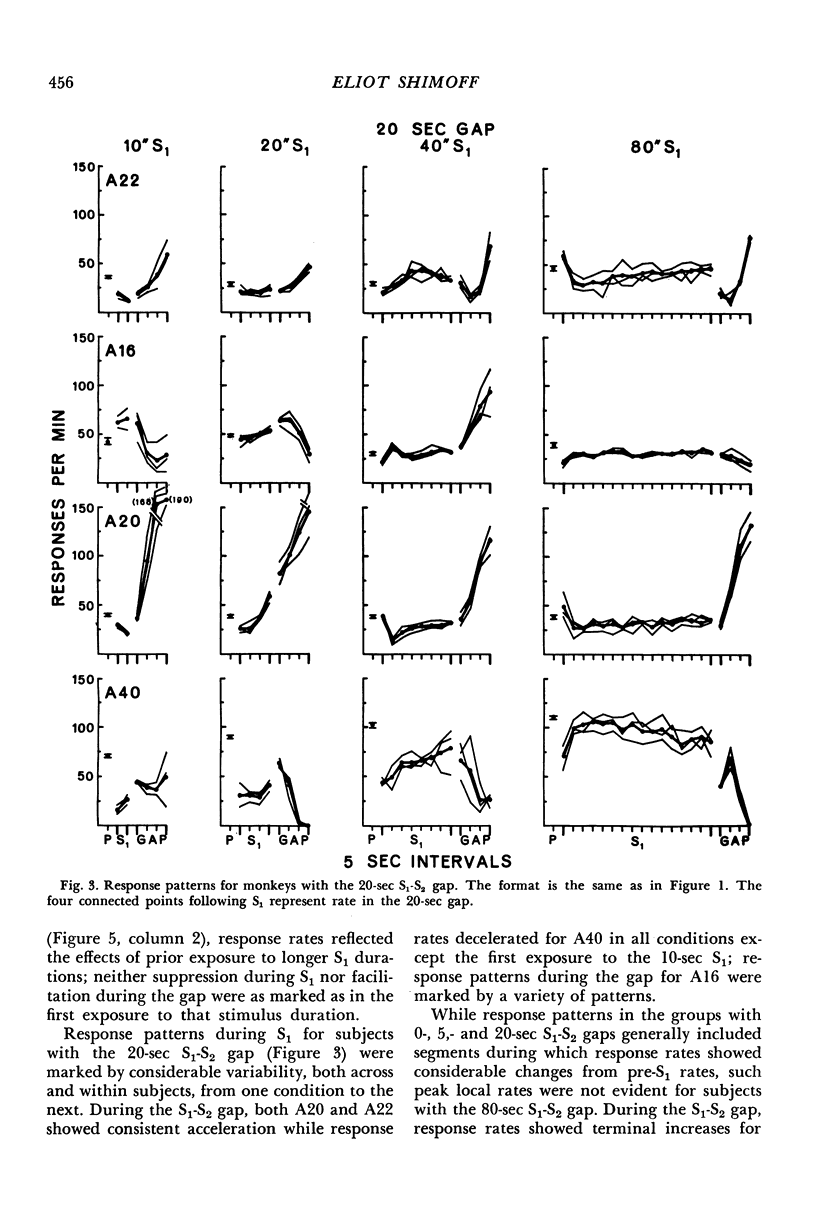
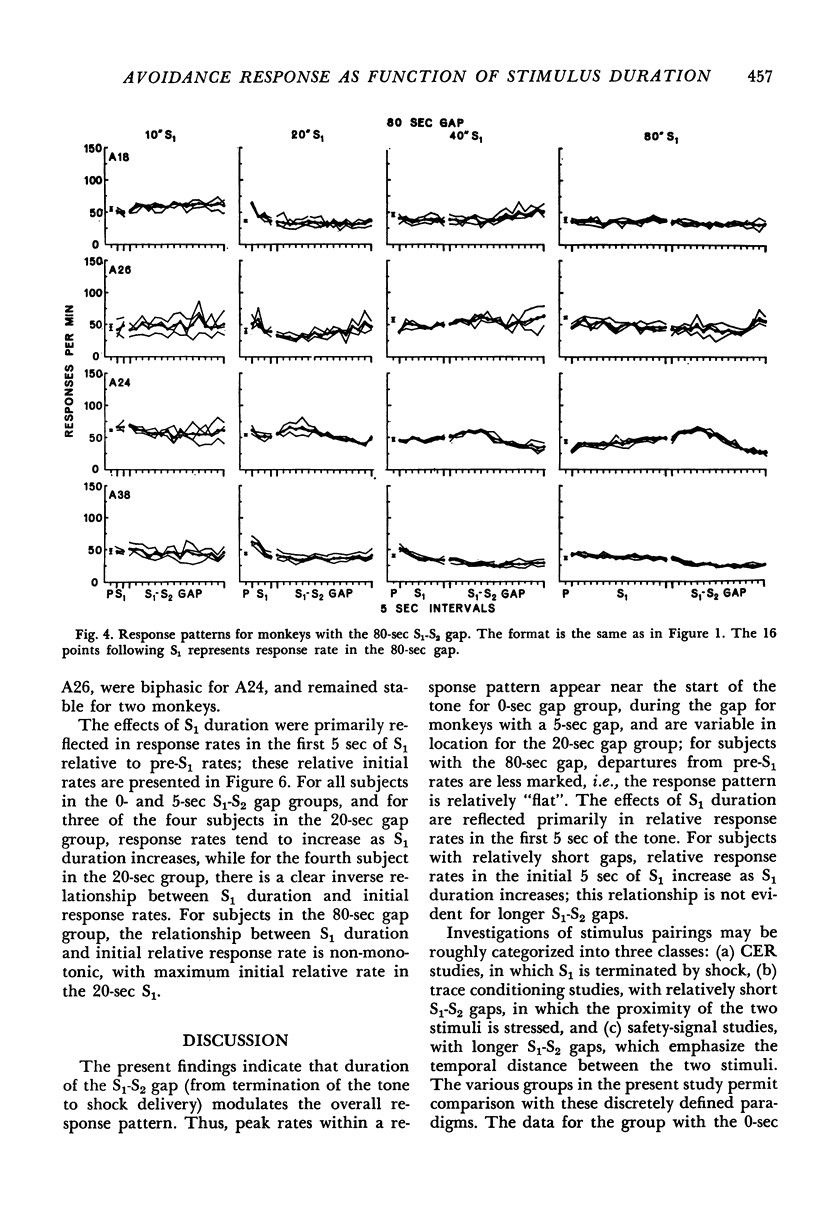
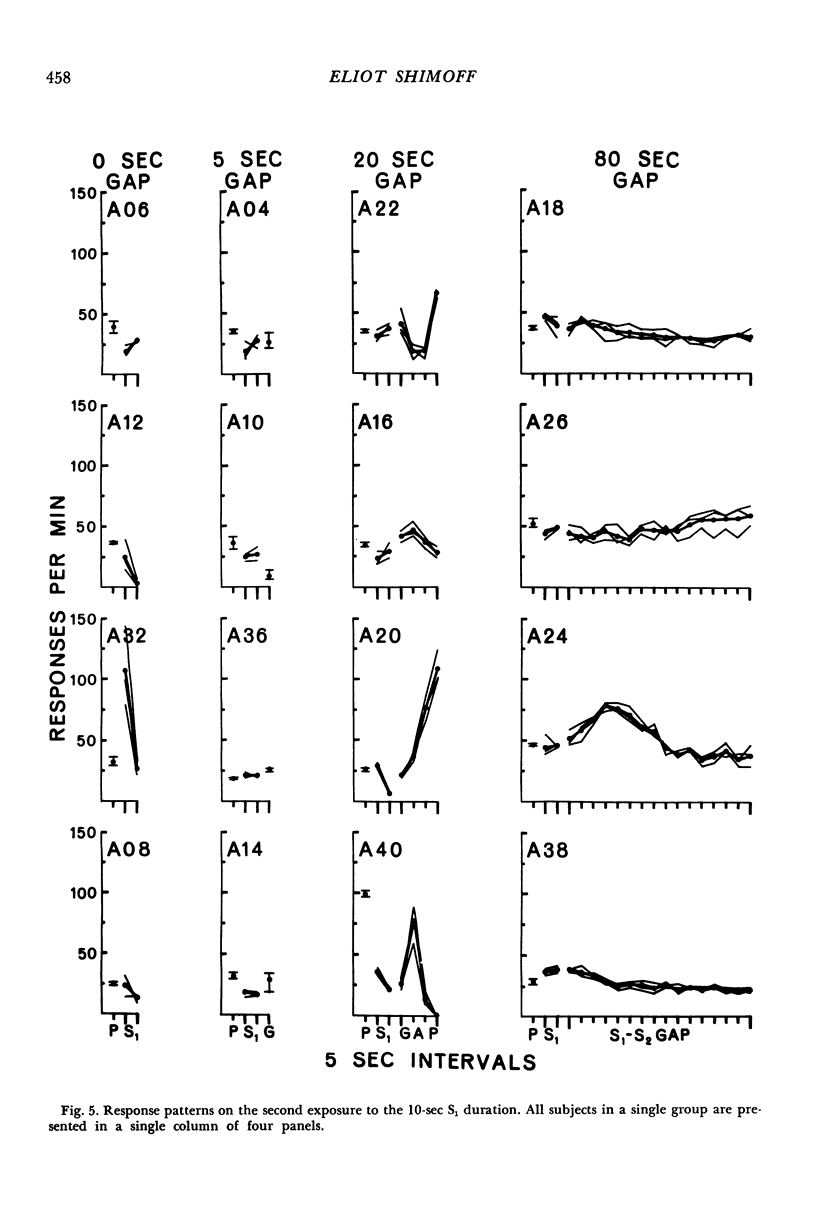
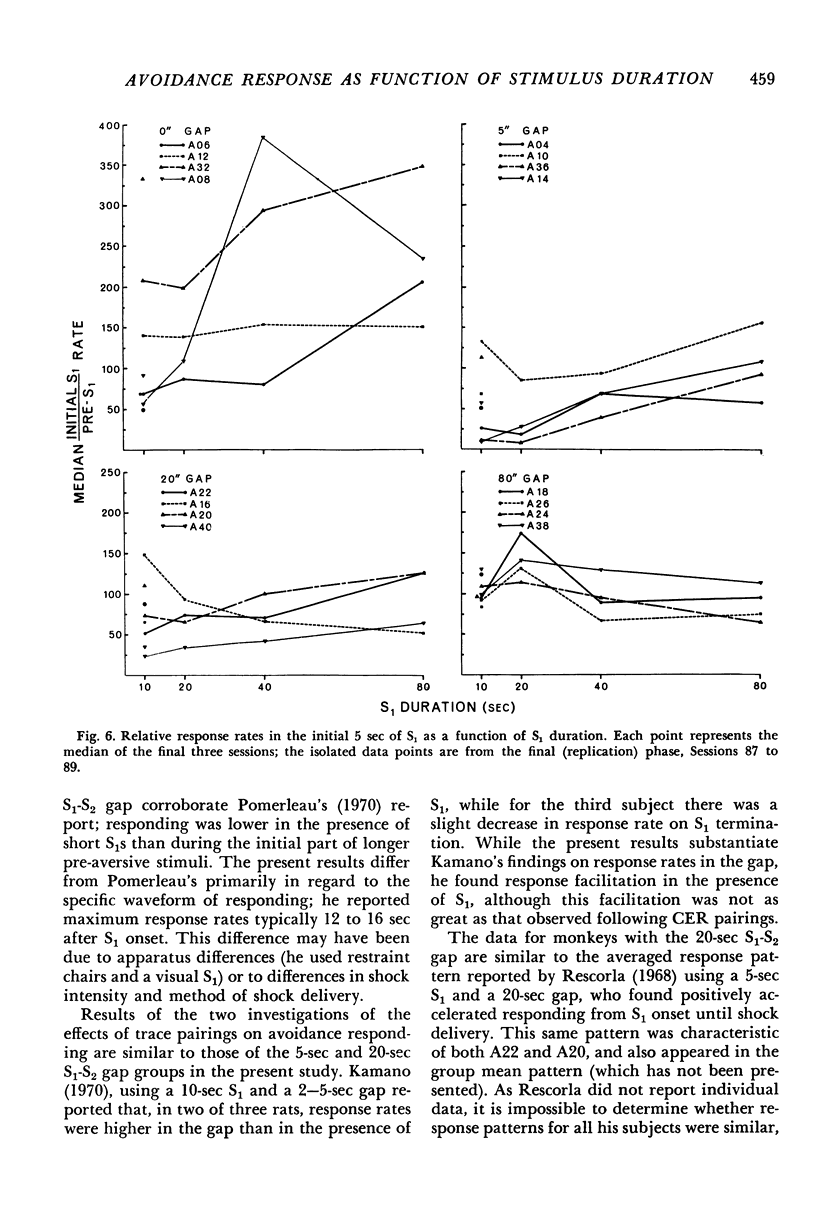
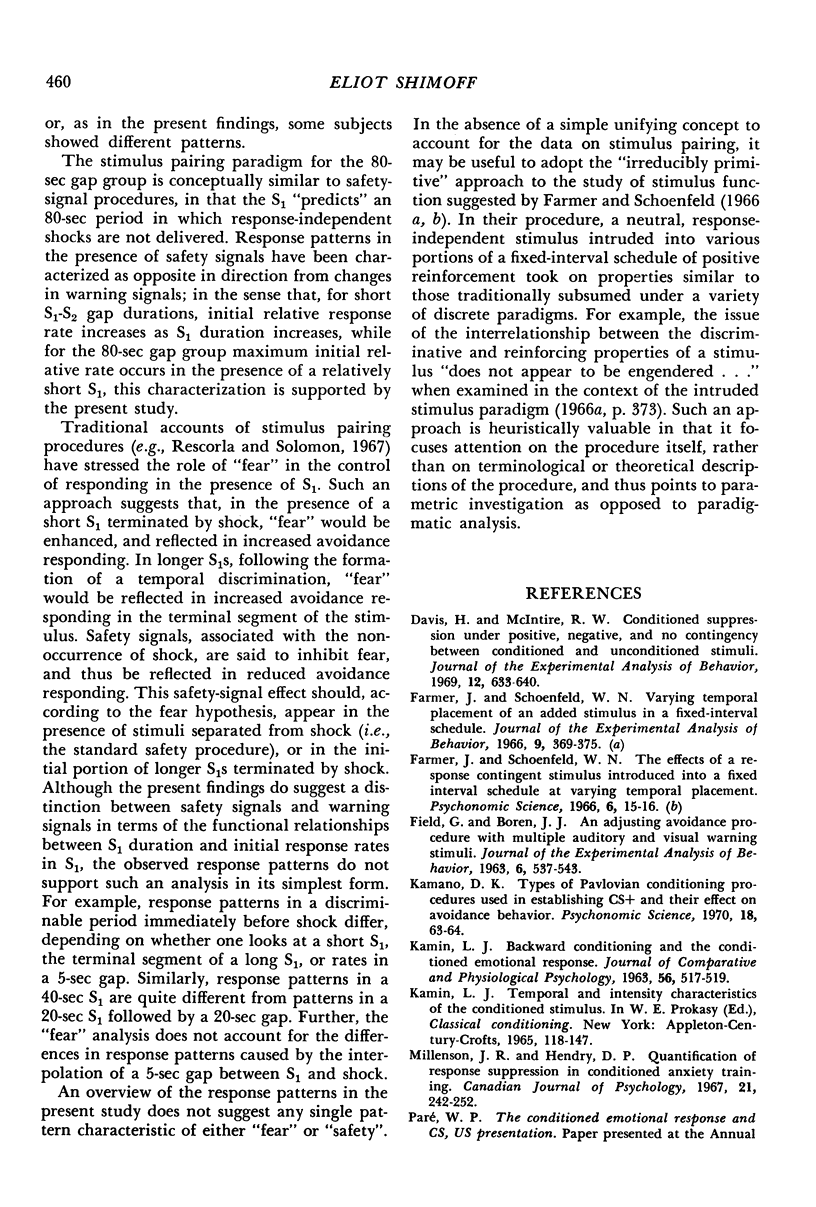
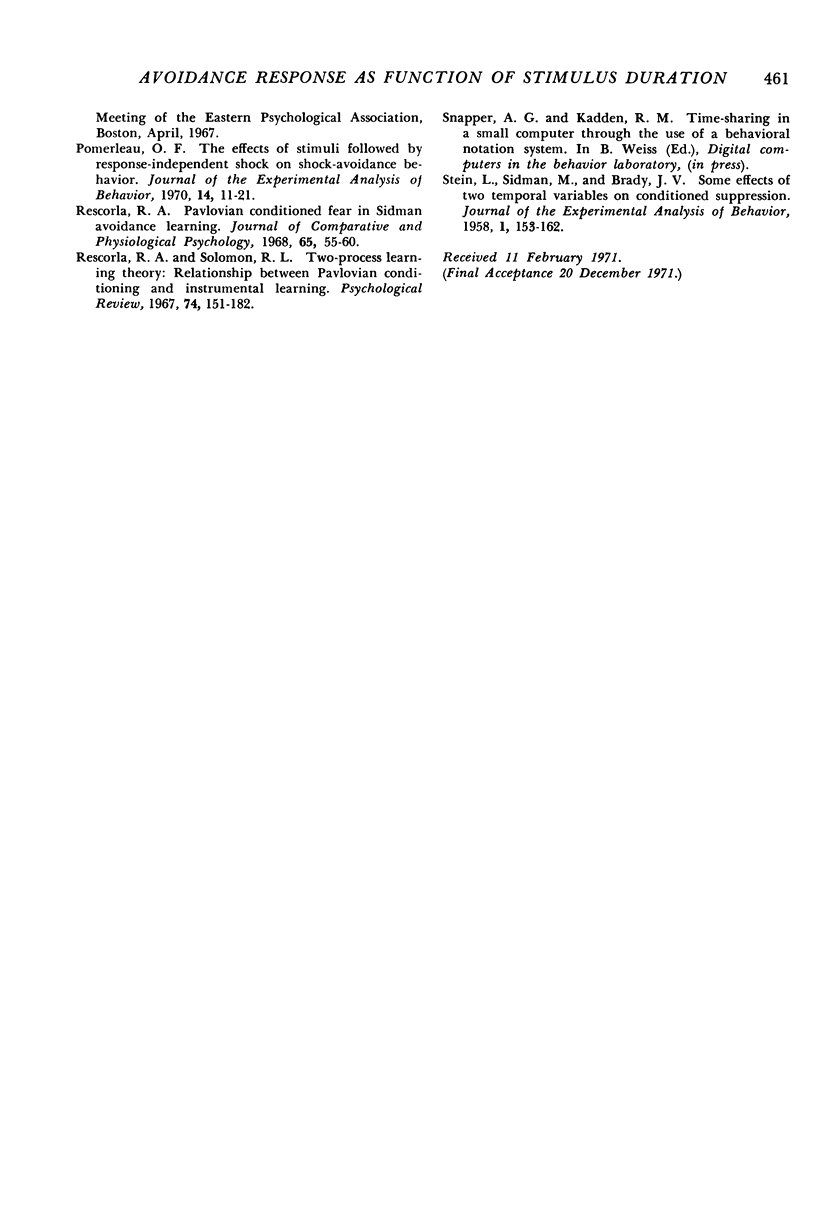
Selected References
These references are in PubMed. This may not be the complete list of references from this article.
- Davis H., McIntire R. W. Conditioned suppression under positive, negative, and no contingency between conditioned and unconditioned stimuli. J Exp Anal Behav. 1969 Jul;12(4):633–640. doi: 10.1901/jeab.1969.12-633. [DOI] [PMC free article] [PubMed] [Google Scholar]
- FIELD G. E., BOREN J. J. AN ADJUSTING AVOIDANCE PROCEDURE WITH MULTIPLE AUDITORY AND VISUAL WARNING STIMULI. J Exp Anal Behav. 1963 Oct;6:537–543. doi: 10.1901/jeab.1963.6-537. [DOI] [PMC free article] [PubMed] [Google Scholar]
- Farmer J., Schoenfeld W. N. Varying temporal placement of an added stimulus in a fixed-interval schedule. J Exp Anal Behav. 1966 Jul;9(4):369–375. doi: 10.1901/jeab.1966.9-369. [DOI] [PMC free article] [PubMed] [Google Scholar]
- Millenson J. R., Hendry D. P. Quantification of response suppression in conditioned anxiety training. Can J Psychol. 1967 Jun;21(3):242–252. doi: 10.1037/h0082981. [DOI] [PubMed] [Google Scholar]
- Pomerleau O. F. The effect of stimuli followed by response-independent shock on shock-avoidance behavior. J Exp Anal Behav. 1970 Jul;14(1):11–21. doi: 10.1901/jeab.1970.14-11. [DOI] [PMC free article] [PubMed] [Google Scholar]
- Rescorla R. A. Pavlovian conditioned fear in Sidman avoidance learning. J Comp Physiol Psychol. 1968 Feb;65(1):55–60. doi: 10.1037/h0025412. [DOI] [PubMed] [Google Scholar]
- Rescorla R. A., Solomon R. L. Two-process learning theory: Relationships between Pavlovian conditioning and instrumental learning. Psychol Rev. 1967 May;74(3):151–182. doi: 10.1037/h0024475. [DOI] [PubMed] [Google Scholar]
- Stein L., Sidman M., Brady J. V. Some effects of Two Temporal Variables on Conditioned Suppression. J Exp Anal Behav. 1958 Apr;1(2):153–162. doi: 10.1901/jeab.1958.1-153. [DOI] [PMC free article] [PubMed] [Google Scholar]


